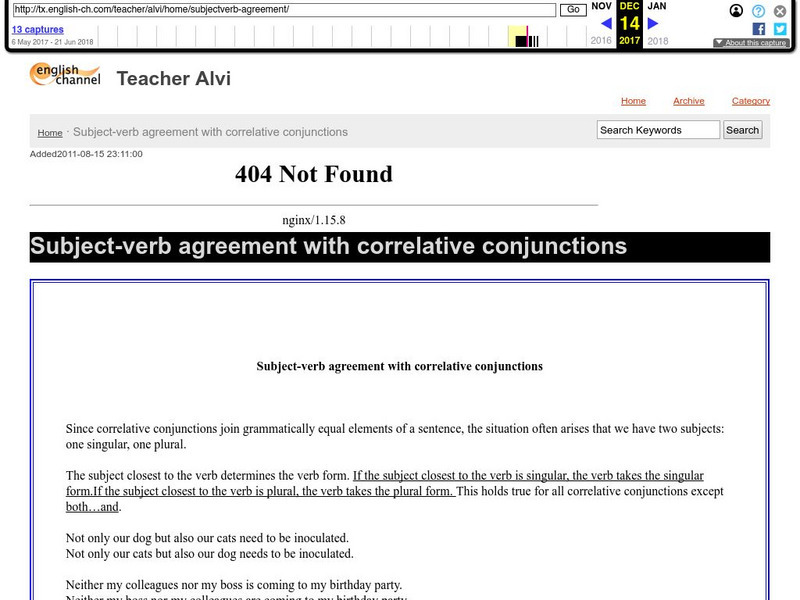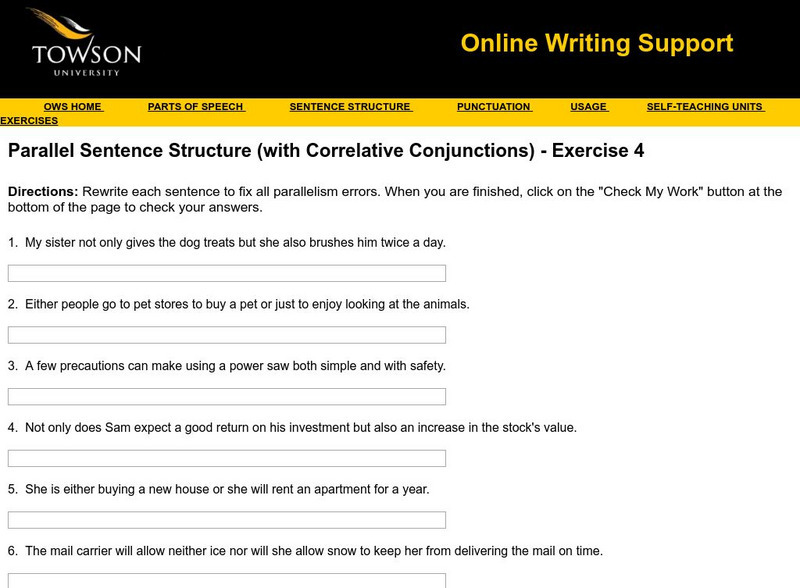Hi, what do you want to do?
Curated OER
Effects of the Sun on Our Planet (Grades 9-12)
Students examine the Earth's magnetosphere and observe the effects of the sun's energy on it. They discover the difference between true north and magnetic north. They also explore how solar cells convert solar energy to electricity.
Curated OER
Biology: Systems of the Human Body
Students examine the different systems of the human body and how they work independently and cooperatively. They complete sevral online interactive projects designed to reinforce how the systems work alone and together. Students make...
Curated OER
Water and Ice
Students explore the forms of water. In this physics lesson, students use ice cubes and observe what happens when the ice melts. Students freeze the water again and record observations.
Curated OER
Designing Visual Support For "The Greatest American" Speech
Students study several periods in American history, define the term "greatest American," and brainstorm possible criteria for selecting great Americans. They create a three to five minute persuasive speech along with visual aids to...
Curated OER
As the Sun Burns
High schoolers test commercial sunscreens or sunglasses for accuracy of their Sun Protection Factor. They devise a method for testing UV beads with a visual clues which they publish as research. They investigate occupations such as...
Curated OER
Earth/Globe (poles & equator)
First graders create his/her own paper mache earth and label the poles and equator. The land masses can be added and labeling of specific bodies of water. The paper mache earth can then be used to discuss the sun, moon, and the earth and...
Curated OER
Just How Big is this Place?
Students are introduced to the the formula for calculating travel time. They listen to different scenarios relating to long distance travel into space and calculate travel time using the formula.
Curated OER
Choosing the Greatest American
Fifth graders identify great Americans to nominate as the "Greatest American Who Ever Lived." They examine several sources, print and non-print. Students use gathered information to explain why some sources are used more than others....
Curated OER
Gathering and Evaluating Sources for the "Greatest American" Speech
Students brainstorm a list of criteria for determining credible sources for their research. They research information to include in their "Greatest American" speech. Students will evaluate all sources by applying the criteria they agreed...
Curated OER
Which Colors Absorb the Most Energy?
Students measure the temperatures over time of different colored envelopes in order to explore the different rates at which each color absorbs energy from a heat lamp. They record their data and graph their results.
Khan Academy
Khan Academy: Correlative Conjunctions
A learning module starting with a video [3 mins, 11 secs] on correlative conjunctions and how they are used correctly. Practice this new skill with a quiz, continue with another video [6 mins, 7 secs] on starting sentences with...
PBS
Pbs Learning Media: How to Use Correlative Conjunctions
Either, nor? Or, neither? Neither! You use correlative conjunctions in connecting two equal grammatical items. If a noun follows "either," then a noun will also follow "or." If a noun follows "neither," then a noun will also follow...
Grammarly
Grammarly Blog: Correlative Conjunctions
This Grammarly Handbook resource clarifies how to use correlative conjunctions correctly in sentences. Numerous examples are provided in this resource.
Khan Academy
Khan Academy: Correlative Conjunctions
Learn to recognize pairs of correlative conjunctions in sentences.
Robin L. Simmons
Grammar Bytes: The Correlative Conjunction
Learn about correlative conjunctions and how to use them properly within sentences.
Other
English Channel: Subject Verb Agreement With Correlative Conjunctions
A brief explanation of the subject-verb agreement rules when using correlative conjunctions is followed by a practice exercise.
The Tongue Untied
Tongue Untied Correlative Conjunctions
Maintained by the University of Oregon School of Journalism and Communications, this site offers numerous examples of the rules of correlative conjunction usage. Also has hyperlinks to sections on subordinating conjunctions, coordinating...
Other
Write Content Solutions: Correlative Conjunctions
Learn about correlative conjunctions and how to use them while considering agreement and parallel structure.
Sophia Learning
Sophia: Correlative Conjunctions
A screencast [2 min, 2 secs] introducing correlative conjunctions and explaining how they work together within a sentence.
Other
Old Dominion University: Correlative Conjunctions
Learn about correlative conjunctions and see how they are used properly within example sentences.
Grammarly
Grammarly Blog: Comma Between Correlative Conjunction Sets
This page provides the rules and exceptions for the use of commas when using corratative conjuction sets such as either or, or neither nor, or not only but also. No commas are needed between them unless the comma is needed for other...
Towson University
Towson University: Parallel Sentence Structure (W/ Correlative Conj) Exercise 4
This is a 10-question, self-grading exercise/quiz on correcting Parallel Sentence Structure using Correlative Conjunctions.
English Worksheets Land
English Worksheets Land: Correlative Conjunctions: Recognizing Conjunctions
Use this worksheet to practice identifying coordinating and correlative conjunctions within sentences.
Soft Schools
Soft Schools: Correlative Conjunctions Quiz
Choose the correct correlative conjunctions to complete fifteen sentences in this online quiz. Submit your answers to see how you did.
























